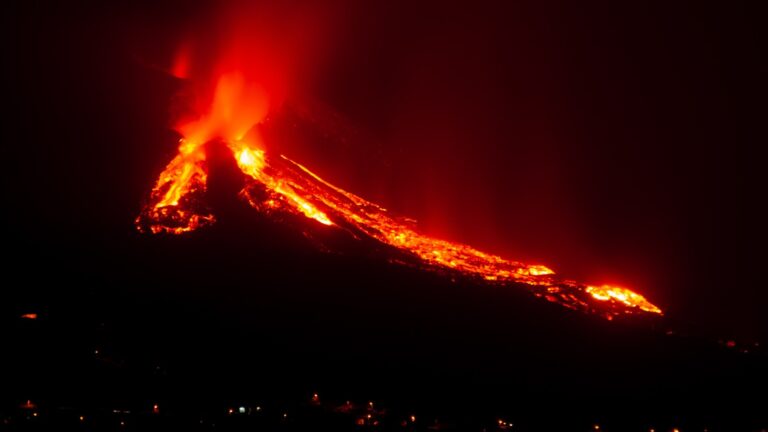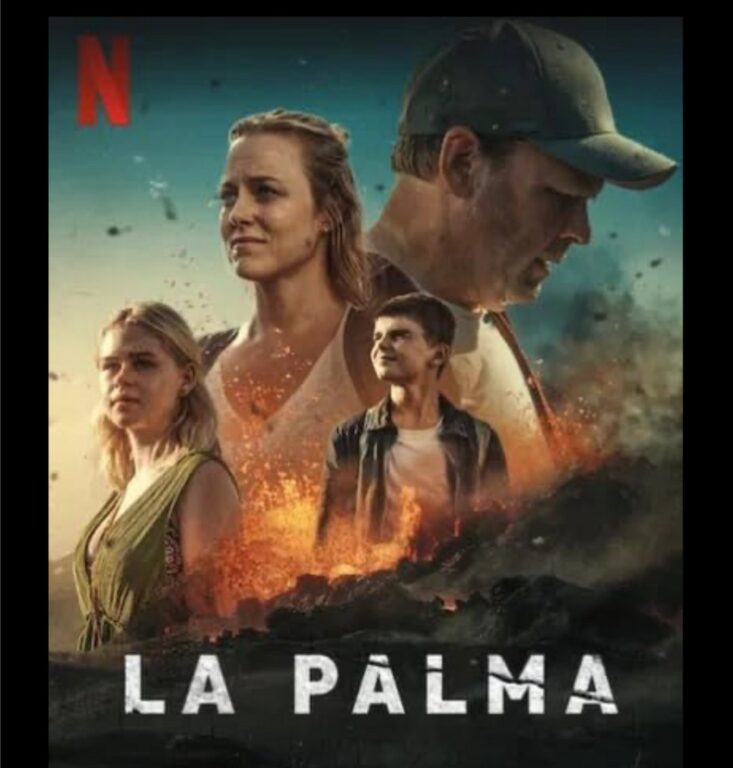If disaster movies are your guilty pleasure, don’t miss La Palma, Norway’s gripping new Netflix series blending epic destruction with emotional drama.
If you’re like me and have an enduring fascination with disaster movies and documentaries, you’ll know the irresistible pull of the genre.

Whether it’s the jaw-dropping spectacle of lava swallowing a town or the harrowing personal stories of survival, disaster narratives somehow manage to both thrill and move us.
I’ve spent countless hours watching non-fiction disaster documentaries on YouTube and rewatching Norwegian classics like The Wave (Bølgen) and The Quake (Skjelvet), both of which expertly combine Hollywood-level thrills with Nordic sensibilities.
Now, Netflix has brought us La Palma, a four-episode mini-series that takes Norwegian disaster storytelling to new heights.
A New Norwegian TV Drama
Now released globally, La Palma is one of Norway’s largest and most ambitious TV productions to date.
Created by Harald Rosenløw Eeg and Lars Gudmestad—the writing duo behind The Wave and The Quake—the series swaps fjords and cityscapes for the volcanic terrain of La Palma in the Canary Islands.
Here, a picturesque holiday destination becomes the backdrop for catastrophe as a volcanic eruption triggers a colossal tsunami, threatening both the island and the thousands of Norwegian tourists who flock there every year.
With a budget reportedly among the largest for a Nordic TV series, La Palma delivers on the visual spectacle we’ve come to expect from the genre. Volcanic eruptions, surging lava, and towering waves are brought to life with special effects that rival big-budget Hollywood productions.

Yet, like its predecessors, La Palma doesn’t rely solely on spectacle. It blends action-packed disaster sequences with a focus on human relationships and moral dilemmas, giving viewers both thrills and emotional depth.
A Paradise Shattered
The series follows several interconnected storylines, including a Norwegian family’s idyllic Christmas getaway gone wrong, a determined scientist trying to warn of impending disaster, and crisis teams working to mitigate the chaos from snowy Oslo.
Ingrid Bolsø Berdal and Anders Baasmo star as Jennifer and Fredrik, a couple navigating both their strained marriage and the island’s growing dangers. Their performances capture the tension between personal struggles and the urgency of survival.
Thea Sofie Loch Næss plays Marie Ekdal, a young geologist who discovers the warning signs of a catastrophic eruption. Her character—a mix of scientific competence and genuine fear—anchors the action and highlights the emotional toll of being the one to ring the alarm bell.
Thorbjørn Harr’s portrayal of Jens Uvdal, a diplomat juggling professional responsibility and personal concerns, offers another layer of complexity, showing how disasters ripple far beyond their immediate epicentres.
Another Norwegian Take on the Disaster Genre
Disaster storytelling is a genre Norway has mastered over the past decade. The Wave and The Quake showcased the country’s landscapes as both awe-inspiring and deadly.
With La Palma, Rosenløw Eeg and Gudmestad extend their reach beyond Norway’s borders, using the Canary Islands’ dramatic volcanic terrain as a stage for a story that feels at once local and global.
Despite the change in setting, the series retains the hallmarks of Norwegian disaster films: grounded characters, believable stakes, and a keen awareness of humanity’s fragility in the face of nature’s power.
However, La Palma also takes some creative risks by adopting the mini-series format. With four episodes instead of a single feature-length runtime, the show explores its characters and themes in greater depth.
While some critics have noted that the pacing stretches the traditional disaster movie formula beyond its natural course, the format allows for a more nuanced exploration of relationships and moral dilemmas.
Filming on La Palma
Filming on the real-life volcanic landscapes of La Palma added both authenticity and challenges to the production.

According to the creators, the series had been in development long before the island’s devastating 2021 eruption, which caused widespread economic and personal loss.
Initially unsure whether to proceed, the filmmakers received encouragement from local authorities, who saw the production as an opportunity to boost the island’s recovery through job creation and economic activity.
For the actors, filming on location was a transformative experience. Ingrid Bolsø Berdal described the island’s black lava fields and towering mountains as both alien and hauntingly beautiful.
Anders Baasmo praised the decision to film on the Canary Islands instead of studio backlots, noting how the dramatic setting elevated the story’s tension and authenticity.
Should You Watch ‘La Palma'
What sets La Palma apart from typical disaster fare is its balance of spectacle and humanity. The show’s creators emphasize themes of human resilience, the interconnectedness of lives, and the fragility of our place in the natural world.
This focus on relationships and moral dilemmas ensures that La Palma is more than just an action-packed thrill ride; it’s a story about what it means to care for one another when the ground beneath your feet is literally crumbling.
If you’re a fan of disaster movies, La Palma is a must-watch. It offers the same edge-of-your-seat excitement as The Wave and The Quake while bringing something fresh to the genre. The stunning visuals, emotional stakes, and layered storytelling make it a standout in both Norwegian and global television.
And if you’ve ever wondered what it would be like to spend Christmas in paradise only to have it turn into a nightmare, La Palma will keep you hooked from start to finish.
All four episodes are now streaming on Netflix. Just don’t blame me if you second-guess your next holiday destination!


Hi David, My husband and I saw La Palma and we REALLY enjoyed it! It was very well made and the suspense was good. Some of it was predictable but ok though.
Thank you for the heads-up in your post!!